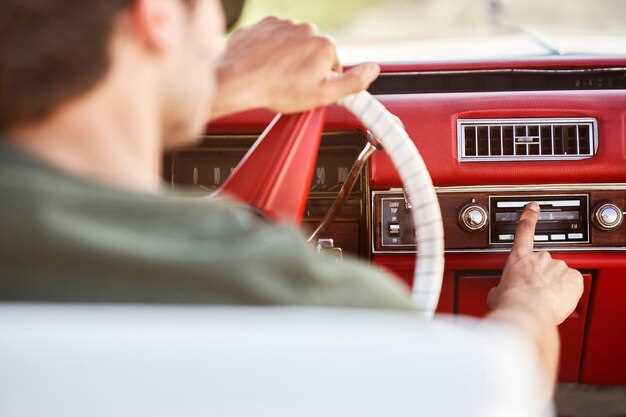
As car enthusiasts and collectors cherish their vintage vehicles, understanding the legal framework surrounding seatbelt usage becomes increasingly important. Vintage cars, typically defined as those manufactured over 25 years ago, often fall into a complex legal gray area regarding current laws that aim to enhance passenger safety. While modern vehicles are mandated to come equipped with seatbelts, the regulations affecting older models can vary significantly from one jurisdiction to another.
The primary concern with vintage vehicles and seatbelt laws is the balance between historical preservation and contemporary safety standards. In some regions, vintage cars may be exempt from modern safety requirements, while in others, they are required to be retrofitted with seatbelts or at least to adhere to specific regulations. Understanding these laws is essential for automobile collectors, restorers, and vintage car enthusiasts to ensure compliance and promote safe driving practices.
Additionally, the implications of seatbelt laws extend beyond legal compliance; they also speak to the responsibility of vintage car owners to protect themselves and their passengers. By examining the diverse landscape of regulations and their enforcement, one can appreciate the importance of adapting classic vehicles to meet today’s safety expectations while still honoring their historical significance.
State-Specific Seatbelt Regulations for Classic Cars

Understanding the seatbelt laws governing classic cars is crucial for owners and enthusiasts. Different states have unique regulations that dictate the requirements for seatbelt use in vintage vehicles. Here’s a breakdown of how seatbelt laws can vary by state:
-
California:
In California, all vehicles manufactured after 1966 are required to have seatbelts. However, classic cars registered as historical vehicles may have exemptions, particularly if they were not originally equipped with seatbelts.
-
Texas:
Texas law mandates that all passengers in a vehicle must wear seatbelts, but this does not apply to classic cars manufactured before 1966, allowing for greater flexibility for owners of older models.
-
Florida:
Florida requires seatbelt use for the driver and front-seat passengers in all vehicles, regardless of the year of manufacture. However, classic cars that did not originally come with seatbelts may not be penalized for lack of modern safety features.
-
New York:
New York state law includes a seatbelt requirement for all occupants, but classic cars may receive consideration regarding their original manufacturing specifications. Owners are encouraged to retrofit their classic vehicles with seatbelts for safety compliance.
-
Illinois:
In Illinois, seatbelt use is mandatory for all passengers. However, vintage cars manufactured before 1965 may not be subjected to the same standards, offering owners the choice to maintain authenticity.
In conclusion, it’s essential for classic car owners to verify their state’s specific regulations regarding seatbelt use to ensure compliance and safety. Researching local laws can help promote safe practices while preserving the vintage charm of classic vehicles.
Implications of Not Using Seatbelts in Vintage Vehicles
Failing to use seatbelts in vintage vehicles presents significant safety and legal implications. While many classic cars were not originally equipped with seatbelts, the law today mandates their usage in most jurisdictions, regardless of the vehicle’s age. This discrepancy can lead to confusion among owners who may believe that vintage status exempts them from modern regulations.
Not utilizing seatbelts increases the risk of severe injury or death in the event of an accident. Vintage vehicles often lack advanced safety features found in modern cars, making the need for seatbelts even more critical. When individuals do not wear seatbelts, they are not only endangering themselves but also affecting the safety of other passengers.
From a legal perspective, if an accident occurs and the occupants are not wearing seatbelts, this can result in greater liability for the driver. In many cases, insurance companies may reduce claims or deny coverage altogether if it is determined that the occupants were not using seatbelts at the time of the incident. Additionally, law enforcement may issue citations for noncompliance, leading to potential fines and penalties.
Furthermore, vintage vehicle owners who choose not to adhere to seatbelt laws risk tarnishing the reputation of the classic car community. Promoting safe driving practices, including seatbelt use, helps ensure that vintage vehicles are celebrated for their history rather than criticized for neglecting modern safety standards.
In conclusion, the implications of not using seatbelts in vintage vehicles encompass both significant safety concerns and legal ramifications. Awareness and compliance with current seatbelt laws are crucial for protecting vehicle occupants and upholding the integrity of classic car ownership.
Retrofitting Seatbelts in Older Models: Legal and Safety Considerations

Retrofitting seatbelts in vintage vehicles is a critical step in enhancing safety for drivers and passengers. While many older models were manufactured before the implementation of modern safety regulations, adding seatbelts can significantly reduce the risk of serious injuries in the event of an accident.
From a legal standpoint, the requirements for retrofitting seatbelts can vary significantly by jurisdiction. In some areas, laws mandate that all vehicles, regardless of their manufacturing date, must have functioning seatbelts. It is essential to consult local regulations to ensure compliance, as failure to do so can result in fines or a denial of vehicle registration.
When considering the addition of seatbelts, it’s important to choose the right type of restraint system. Modern seatbelt designs are engineered to work with current safety standards, which may not align perfectly with older models. Therefore, professional installation is highly recommended to ensure that the seatbelts function correctly and provide optimal safety.
Moreover, retrofitting may also involve structural modifications to ensure that the seatbelt anchors are securely fastened. This is vital since improperly installed seatbelts may not offer the intended protection during a collision. Proper engineering assessments can help determine the best approach for installation without compromising the integrity of the vehicle.
Another consideration is the potential impact on insurance policies. Some insurers offer discounts for vehicles equipped with modern safety features, including seatbelts. It is wise to inform your insurance provider about modifications to potentially lower premiums and ensure coverage in case of an incident.
In conclusion, retrofitting seatbelts in older models is a necessary measure that not only enhances the safety of all occupants but also aligns with legal requirements. By adhering to local laws, opting for professional installation, and addressing insurance implications, vehicle owners can ensure that their vintage rides are both stylish and secure.
